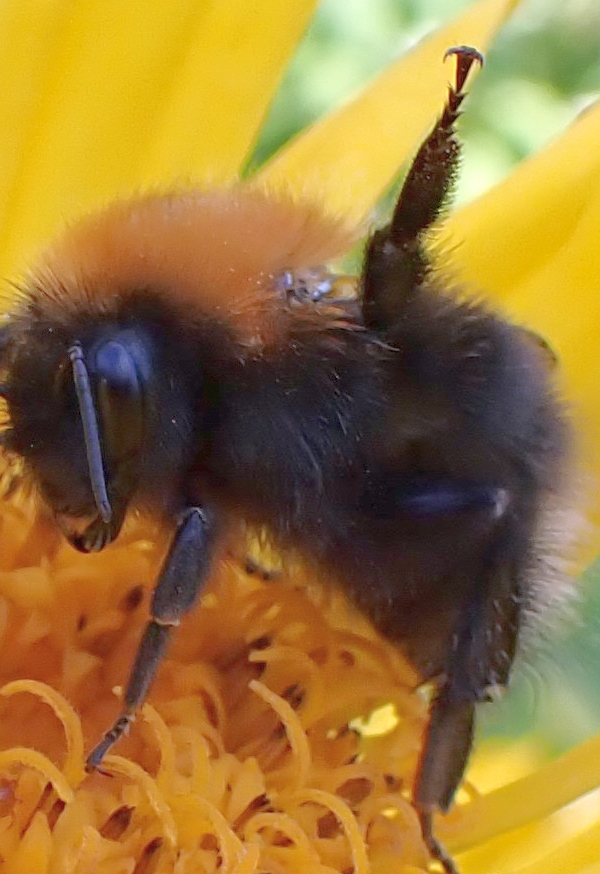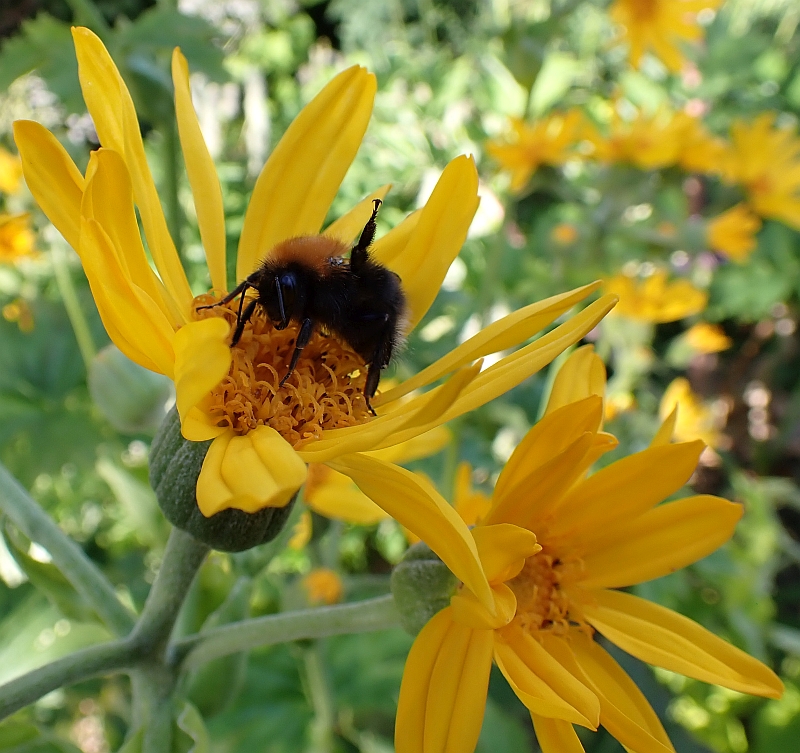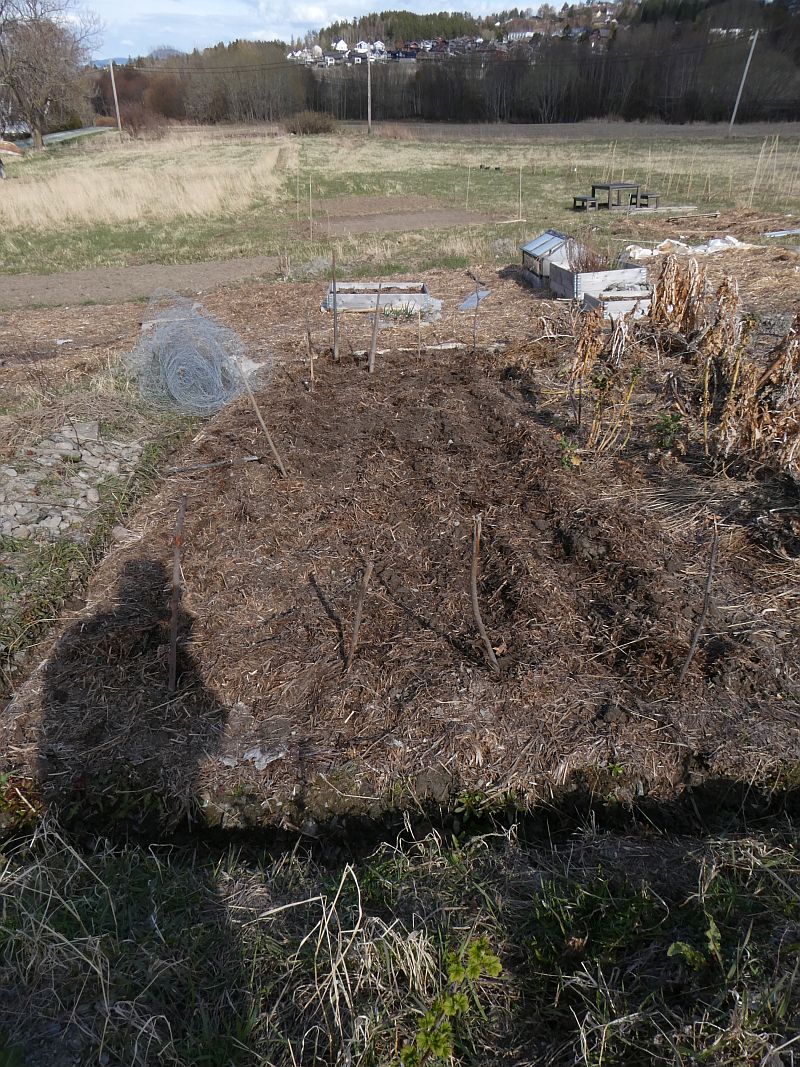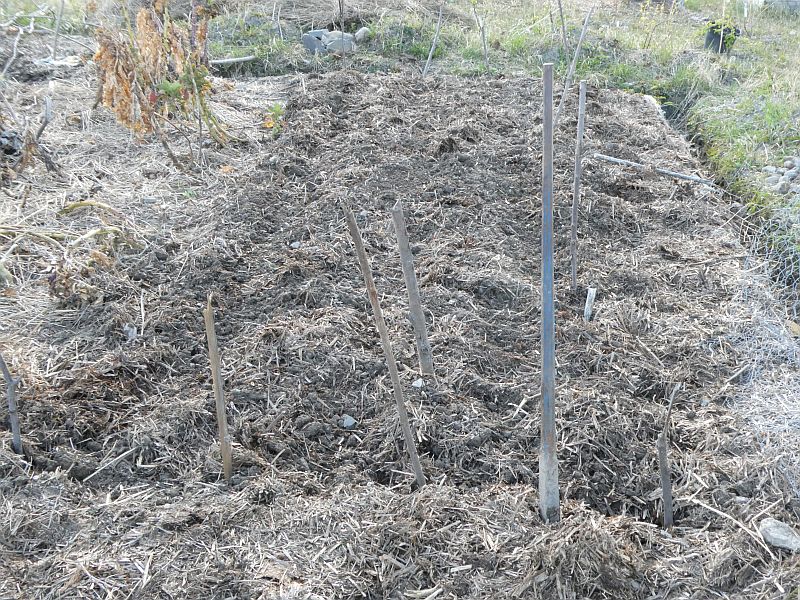



This spring sign today went unnoticed for many years, one of many moth species that has been registered feeding on Salix caprea (goat willow / selje) in spring, soon to be in flower here: this is the satellite / bølgefly (Eupsilia transversa); it overwinters as an adult. I’ve recorded it over the last few years from 14th March to 2nd May and once in the autumn. Its larval food plants are a variety of broad-leaved trees and shrubs including blackthorn, hawthorn, hazel, field maple, sweet chestnut and elms (all of which are found in the garden). The first bumblebees have been out in the garden this week on snowdrops and Crocus, here a tree bumblebee / trehumle (Bombus hypnorum), one of the commonest species here. It will too soon move over to goat willow (selje)!
The first bumblebees have been out in the garden this week on snowdrops and Crocus, here a tree bumblebee / trehumle (Bombus hypnorum), one of the commonest species here. It will too soon move over to goat willow (selje)!

Several species of bumblebee were queuing up for a turn on the Allium pskemense x cepa hybrid in the garden this afternoon:
North Pole? Yesterday I worked for the first time this year at the Væres Venner Community Garden where KVANN (Norwegian Seed Savers) and I are involved. When I arrived there was a pair of white wagtails (linerle) at the North Pole of the World Garden (I’ve planted mainly perennial vegetables geographically on a 12m diameter garden with the centre representing the north pole, marked by a pile of rocks) :)
Otherwise, honey bees were active on a group of dwarf daffodils (påskeliljer), significantly earlier than other Narcissus:

First serious dig of the year preparing an area for potatoes, removing the last of the couch grass (kveke) roots (I hope) and planted about 30 Sarpo potatoes (Sarpo Mira and Sarpo Tominia). Also sowed broad beans, planted onion sets and caraway root (karve).
Overwintering of the 100+ fruit, berry and nut trees seems to be very good!

A dark green fritillary (aglaya perlemorvinge) and my second red-tailed bumlebee (steinhumle) on my Buddleja and Clematis vitalba (old man’s beard….not me!)
Yesterday, I registered red-tailed bee / steinhumle (Bombus lapidarius) for the first time at the community garden (Væres Venner), the first time in this part of Trondheim. This is a common species in the city and is probably the commonest bumblebee in the Allium garden at the botanical gardens. Today, I saw this species for the first time in my own garden, the first record in this area. It was on Allium pskemense, probably the most popular plant in my garden for bumblebees. In the second video you can see both the white-tailed bumblebee (Bombus lucorum; lys jordhumle) and tree bumblebee (Bombus hypnorum; trehumle). Please correct me if I’m wrong!
I didn’t expect to find a bumble bee feeding first thing this morning but I found this Bombus hypnorum (tree bumblebee/trehumle) busy visiting flowers of Ribes divaricatum and its selection Worcesterberry. The air temperature was about freezing…